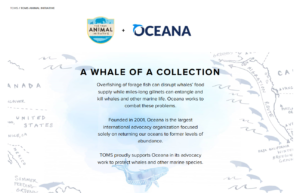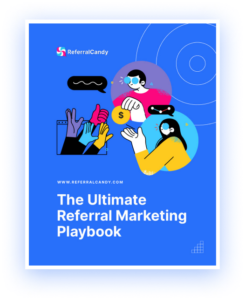
If you’re looking to expand your customer base or you have recently acquired an ecommerce company, your first thought might be to push for new customers. But you may be looking for growth in the wrong place.
Did you know it costs up to 25 times more to gain a new customer than it does to sell to a current one? There’s more. In ecommerce, repeat customers are 9 times more likely to convert than first-time visitors. Despite only providing 8% of site traffic, existing customers generate 40% of revenue, spending 67% more than new ones.
So loyalty is clearly an essential component of the ecommerce world, paying off hugely over time — but how do you build the customer experience? How can you encourage customers to come back and use your services again? This beginner’s guide will show you how.
It’s all about the perks
Historically, customer experience programs have been centered around reward systems. The customer spends X amount at store, and they receive X% discount.
However, in such a multichannel buying landscape, customers expect more from the companies they interact with. Why not consider rewarding customers for sharing some of your products on social media? Or referring friends? Both are great ways to encourage loyalty and advocacy that don’t require a lengthy point-building commitment for the customer.
Non-monetary reward schemes
Perks don’t necessarily need to reward customers with monetary value either. Some of the best loyalty campaigns ask the customer to engage with the brand’s own values.
Take TOMS, for example. They are running an initiative to raise awareness of Oceana – a charity working to protect whales from overfishing. Cleverly, they have also created a whole range of vegan whale-themed shoes. Customers who purchase from TOMS are not only endorsing a charity, but also adhering to an ideal, a value system that they believe in. This provides a powerful basis for gaining loyalty.

Building loyalty through programs
Loyalty programs are a great way to keep customers coming back to you. A 2017 Loyalty Report found that 81% of consumers believe that loyalty programs make them more likely to return to brands. However, there is a common mistake that brands are making.
According to this report, the majority of consumers who have signed up to a company’s loyalty program believe that they are treated like everyone else. They’re not being made to feel special. That’s where you can gain a competitive advantage. There are many types of loyalty programs, including
- Points Systems
- Punchcards
- Premium Programs
- Partnerships
Point systems
The point system is a classic method for building customer loyalty. It involves setting up a system that rewards customers who purchase with you frequently. After a certain number of points, they receive a discount on their next purchase or a voucher. It’s important to think creatively here to really incentivize your customer-base.
Maybe send a box of goodies, or a nicely-designed thank-you card. You could even afford a special privilege, such as access to exclusive releases or products. Make customers feel that the more they spend with you, the better they’ll be treated.
Punchcards
Punchcards are a simple-to-use distillation of the points system; gain a stamp for every purchase, fill in the card and get your reward. It’s simple to use for customers, cashiers and business owners, plus it’s easy to see progress; customers can count down their nine coffees, knowing the tenth is free.
Save your customers the hassle of dealing with a physical card. Check out a digital punchcard solution with Candybar loyalty today.
Premium programs
An increasing trend in service-based ecommerce is premium programs. Each premium tier will present customers with additional value, encouraging people to pay a little extra to receive a lot more in return. This could be VIP treatment at a gig or event, free next-day delivery, or entry into a longer-term reward scheme.
Perhaps the most cited case study for this is Amazon Prime. If you have purchased from their site in the last 12 months you can’t help but have noticed the plugs for their premium service: a yearly cost that provides access to next-day delivery, their live streaming service and more. You may have even have signed up for it accidentally.

With fast delivery and great customer service at the heart of their offering, you can see why it’s so popular. While you may not be able to offer a service like this, consider if there is a ‘pay for premium’ element you could offer to customers, and think about how it would benefit them.
Partnerships
Brand partnerships are on the up and definitely something you should consider. Not only do you extend your potential customer base to a whole new, engaged audience, but you also create exciting opportunities for loyalty building.
Let’s say you’re a clothing retailer. Why not partner with a fundraising organisation or festival? You could create a line of clothing that — if purchased — gives the consumer discounts on tickets or priority booking.
One excellent example of this is the partnership between Apple and Mastercard. When Apple wanted to introduce their revolutionary new Apple Pay functionality, they partnered with MasterCard to offer it to their customers first. Evolving how their customers pay with a technology partnership, MasterCard brought a brand new offering to their customers, simply for being their customers.
Are there any brands that you could partner with? Consider how this could benefit your customers. Will they get an extension to your service? A new choice? A new way to engage with your product? Whatever the benefit, partnerships offer an exciting and mutually beneficial way to improve the customer experience.
Programs must make profits
It’s easy to get carried away with loyalty systems, especially if they start working. And while the customer should always be at the heart of your strategy, always remember that it is ultimately your profits that will keep you in business. Left unchecked, loyalty systems can choke your return on investment even if your sales are increasing.
Discounts are a sure fire way to shrink your profit margin quickly. By offering a discount, you may increase sales, but customers will come back — or refer friends — with the expectation of a discount. If it’s not there, they either won’t buy or they’ll wait for you to discount it again. Over time your margins will shrink. As such, think about what you can offer to your customers that won’t come at so high a cost.
In the online marketplace, there’s a reason why there are plenty of businesses under $5,000, far less than the average cost of a new car in the US — they’re fundamentally sound, but they lacked the loyal customer bases to continue without major ongoing ad spending. Cash flow will kill any small business who cannot balance loyalty with profitability.
Always be sure to track the success of your customer experience initiatives. If your end goal is to increase customer retention, ensure you track it. Google Analytics reports, short post-purchase surveys or customer calls can be great ways to collect data on the success of your initiative — above and beyond pure sales figures. If something goes wrong, you need to know about it.
There are so many great routes you can take to improve customer experience, grow your repeat purchasers and build loyalty. Remember that customers will see right through a simple ploy to increase sales. Put them at the heart of your initiative. Think about what would motivate them to return and how you can keep them, because a happy customer will stay with you forever.

Kayleigh Alexandra is a content writer for Micro Startups, a site committed to the furthering of entrepreneurial ambitions. For some actionable advice and hearty motivation, visit the blog, and stop by our Twitter page @getmicrostarted.


